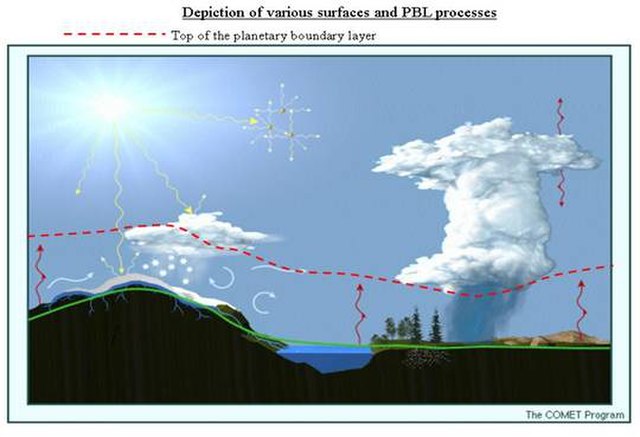In physics and fluid mechanics, a boundary layer is the thin layer of fluid in the immediate vicinity of a bounding surface formed by the fluid flowing along the surface. The fluid's interaction with the wall induces a no-slip boundary condition. The flow velocity then monotonically increases above the surface until it returns to the bulk flow velocity. The thin layer consisting of fluid whose velocity has not yet returned to the bulk flow velocity is called the velocity boundary layer.
The boundary layer around a human hand, schlieren photograph. The boundary layer is the bright-green border, most visible on the back of the hand (click for high-res image).
Ludwig Prandtl
In meteorology, the planetary boundary layer (PBL), also known as the atmospheric boundary layer (ABL) or peplosphere, is the lowest part of the atmosphere and its behaviour is directly influenced by its contact with a planetary surface. On Earth it usually responds to changes in surface radiative forcing in an hour or less. In this layer physical quantities such as flow velocity, temperature, and moisture display rapid fluctuations (turbulence) and vertical mixing is strong. Above the PBL is the "free atmosphere", where the wind is approximately geostrophic, while within the PBL the wind is affected by surface drag and turns across the isobars.
Depiction of where the planetary boundary layer lies on a sunny day.
The difference in the amount of aerosols below and above the boundary layer is easy to see in this aerial photograph. Light pollution from the city of Berlin is strongly scattered below the layer, but above the layer it mostly propagates out into space.
A shelf cloud at the leading edge of a thunderstorm complex on the South Side of Chicago that extends from the Hyde Park community area to over the Regents Park twin towers and out over Lake Michigan





